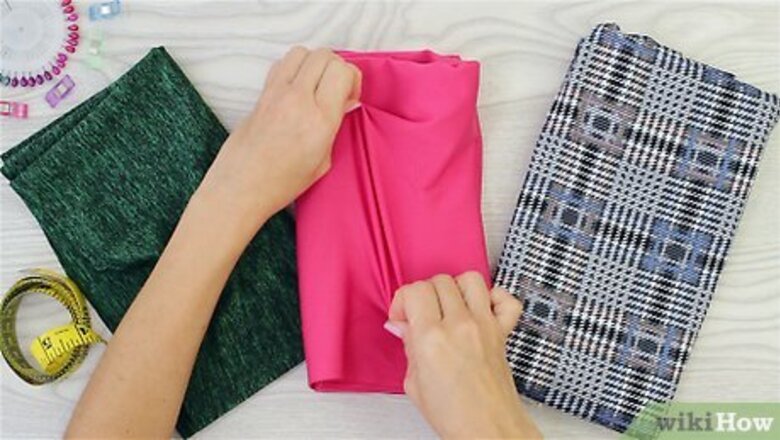
views
Gathering Your Materials
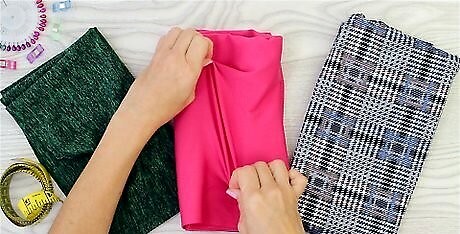
Choose your fabric. A stretch fabric works best for making leggings, so opt for a stretch jersey, spandex, rayon with lycra, or some other type of stretchy fabric. You will need about 2 to 3 yards (1.8 to 2.7 m) of fabric depending on your size. If you are making leggings for a baby or toddler, then you will only need about 1 yard (0.91 m) of fabric. For baby and toddler leggings, you can also use a printed t-shirt for fabric. Make sure it is a shirt that you are willing cut up. You can use an old t-shirt or buy one on clearance.

Find an old pair of leggings. To create the pattern for the leggings, you will also need a pair of old leggings that fit you (or the person who will wear the leggings). If the leggings are a little smaller than you want them to be, then you can draw outside of the edges of the leggings to make them larger.
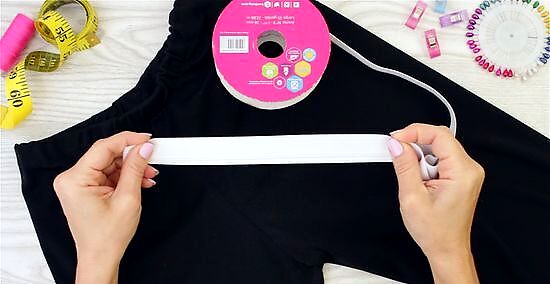
Get some elastic for the waistband. You will need a piece of elastic that is long enough to wrap around the waist of the person who will wear the leggings. You can opt for a narrow piece of elastic, such as a piece that is 0.5 inches (1.3 cm) wide, or you can go with a wider piece, such as a piece that is 2 inches (5.1 cm) wide. The elastic will be hidden in the waistband, so you can use any color.
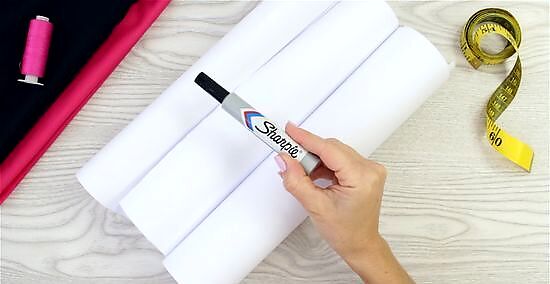
Collect paper and a marker for making a pattern. To create your own custom pair of leggings, you will need to make a pattern first. That will require some paper that you can trace the outline of your folded leggings onto and a black marker. You can use a large roll of craft paper to get a piece that will be big enough for adult leggings, or you can use a large piece of construction paper for a pair of baby or toddler leggings.
Creating a Leggings Pattern
Spread out your paper and lay the folded leggings on top of it. Take your pattern paper and spread it out on a flat work surface. Then, fold your leggings in half lengthwise and lay them out on the paper. Align the outer edge of the leggings with the edge of the paper. You will not need to trace along this edge. If you're not using an old pair of leggings, use your measurements to create the design. If you're using a non-stretchy fabric, use your actual body measurements. If it's a super-stretchy fabric, subtract about 4 in (10 cm) from each measurement to ensure the leggings will fit correctly.
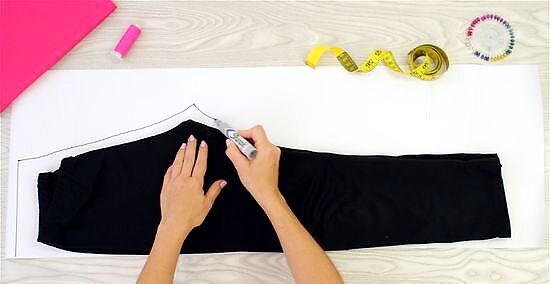
Trace the edges of the waist, inseam, and bottom of the leg. Use the marker to trace about along the edges of the leggings that are not aligned with the edge of your paper. Trace along the waist, inseam, and bottom of the legs. Be careful not to touch the leggings with the marker or you may stain them. Trace about 1 inch (2.5 cm) from the bottom of the leg to allow room for the hem, 2 inches (5.1 cm) from the top of the waistband to allow room for the elastic band, and 0.5 inches (1.3 cm) from the inseam of the leg. If you want to make a slightly larger pair of leggings than the pair that you have, then trace about 1.5 inches (3.8 cm) from the edges of the leggings.
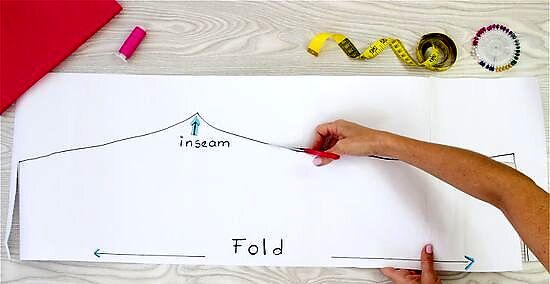
Mark and cut out the pattern. Write on the paper to indicate where the inseam of the leggings will be. You may even want to draw arrows on the pattern to indicate which part of the pattern will need to line up with the fold. Then, use a sharp pair of scissors to cut along the marked areas of the pattern. This will complete your leggings pattern.
Using the Leggings Pattern
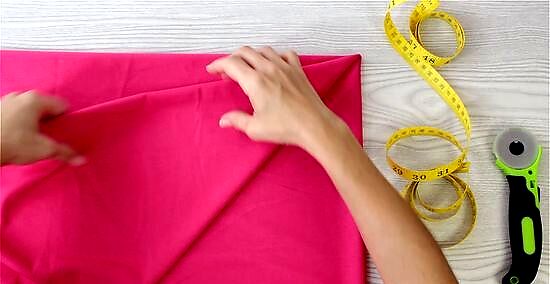
Fold the fabric in half lengthwise twice. After you have cut out your pattern, take your fabric and fold it in half lengthwise 2 times. This will allow you to cut out both leg pieces at once. Make sure that the fabric is lined up evenly. Another option is to cut out 2 pieces separately by creating 2 separate folds in your fabric and cutting along the waist, inseam, and bottom of the legging pattern twice.
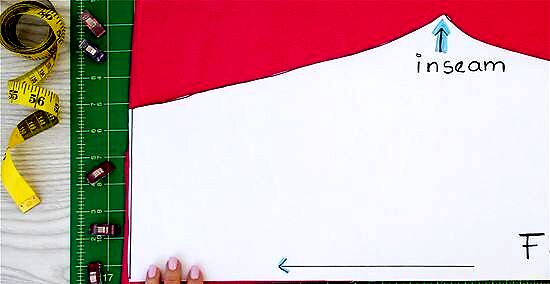
Place the pattern onto the edge of the folded fabric. Lay the pattern over the folded fabric so that the outside of the leg on the pattern is lined up with the folded edge of your fabric. The inseam part of your pattern should be slightly in from the edge of the fabric.
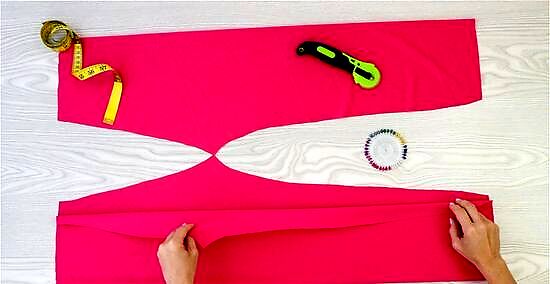
Cut the fabric along the top, bottom, and inseam. To cut out your fabric pieces for sewing leggings, use a rotary cutter and cut along the top, bottom, and inseam of your pattern. Do not cut along the folded edge of the fabric.
Sewing the Pieces Together
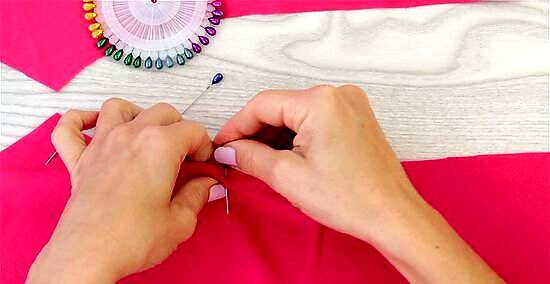
Pin along the inseam of the leg. Take your fabric pieces and separate them. Then, take one piece and fold it in half lengthwise so that the inseam of the leg is matching up and the printed side of the fabric is on the inside. Place pins along the inseam of the leg, but do not pin past the crotch area on the legging piece. After you pin up the inseam on one piece, do the same with the other piece.
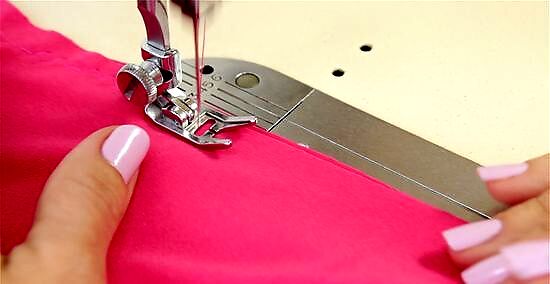
Sew along the inseam. When you have finished pinning both of the legging pieces along the inseam, use a sewing machine to sew a zigzag stitch along the pinned areas. Sew about 0.5 inches (1.3 cm) from the edge of the inseam. Do not sew past the crotch area. Remove the pins as you sew. Trim off the excess threads when you are done.
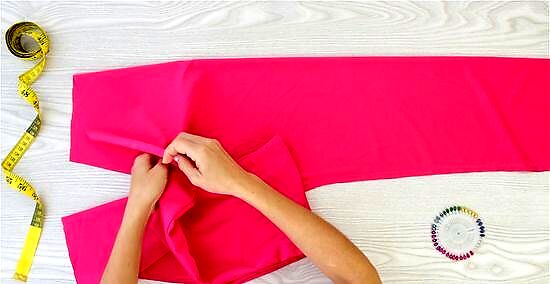
Insert one leg into the other. After you finish sewing both leg pieces along the inseams, turn one of the leg pieces right side out. Then, insert this piece into the piece that still has the print side on the inside. The pieces should be aligned so that their waistbands match up and the bottom of the legs are even. Make sure the seams are all lined up as well.
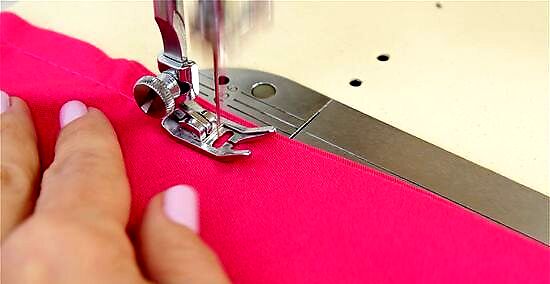
Sew around the edge of the crotch seam. With one pant leg inside the other, sew along the crotch area going from one side of the waistband to the other. This will connect the 2 pant legs and create the seam for the crotch. Trim off any excess threads when you finish sewing.
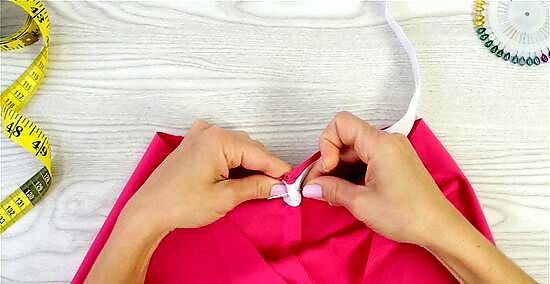
Sew the elastic into the waist. Turn the pants right side out. Then, pin the end of the elastic strip so that it is lined up with the edge of the waistband on the back side of the pants. Make sure that the elastic is on the inside of the waistband, not on the printed side. Sew a zigzag stitch along the top edge of the elastic to secure it in the waistband. Tug on the elastic slightly as you sew to ensure that it will create a snug waistband. Sew all the way around the waistband so that the elastic overlaps by about 0.5 inches (1.3 cm). Make sure not to sew over the pin and remove the pin when you are done sewing. Trim off any excess threads.
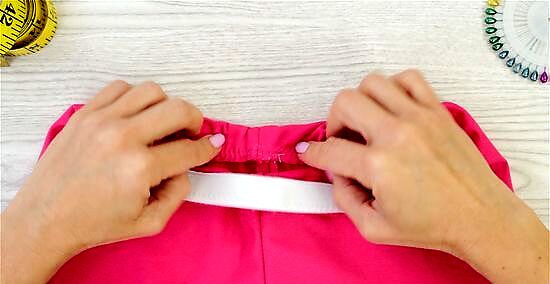
Fold over the elastic and sew around the edge. After you sew the elastic strip into the waistband, cut off any excess elastic and discard it. Then, fold the waistband over into the pants to hide the raw (cut) edge of the fabric. Then, sew a zigzag stitch along the inner edge of the waistband to secure it in place and finish the waistband. Trim excess threads when you finish sewing.
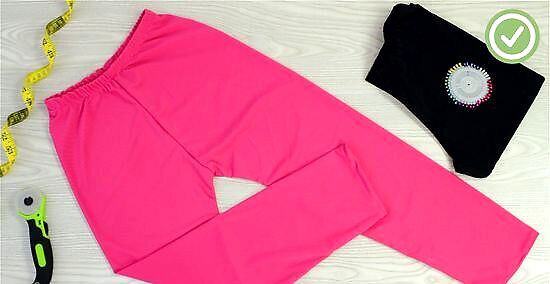
Hem the bottom of the leggings. To hem the bottom of your leggings, fold the fabric up and into the pant leg at the bottom of each leg. This will hide the raw edge and ensure that only the print side shows. Then, sew a zigzag stitch along the inner edge of the pant leg. Repeat this for both legs. This will secure the hem on the bottom of your legging pant legs and finish your leggings. Trim away excess threads when you finish sewing.



















Comments
0 comment